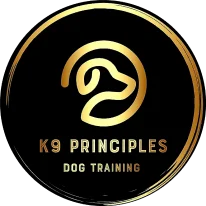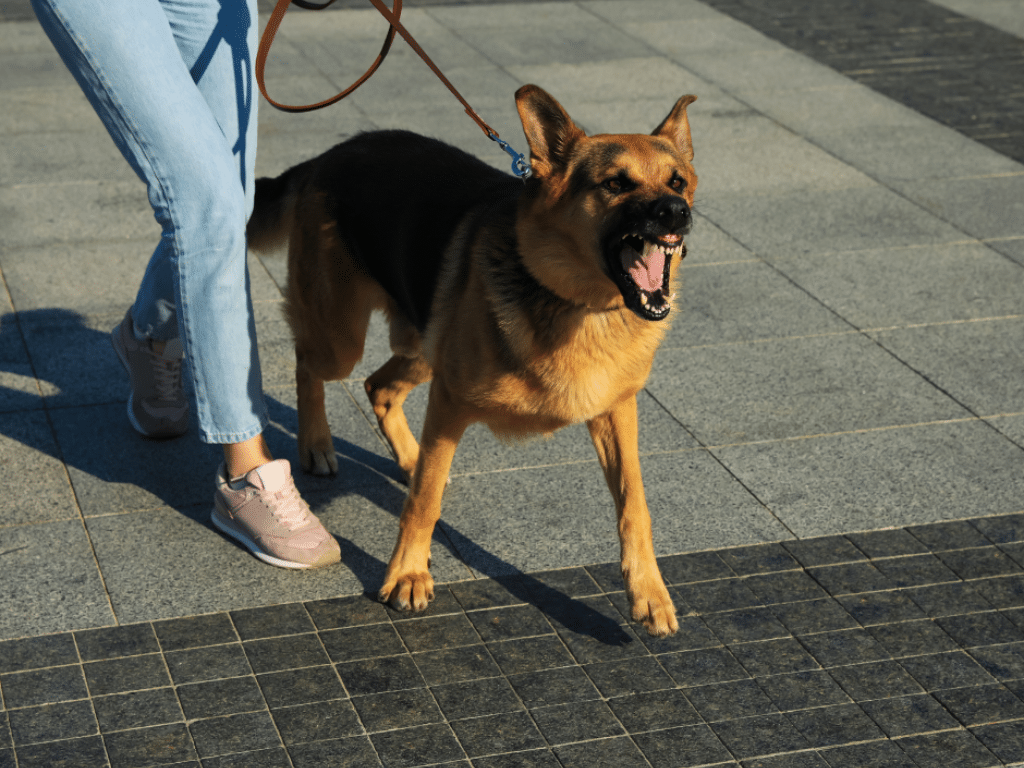Introduction
Dog reactivity is a common issue that many pet owners face, and it can be challenging to manage. Reactivity in dogs often manifests as excessive barking, lunging, or growling when they encounter certain triggers, such as other dogs, strangers, or loud noises. Socialising a reactive dog is crucial for improving their behaviour and ensuring they lead a happy, balanced life. This guide will provide you with detailed steps and techniques to help you socialise your reactive dog effectively, with insights from dog training in Hamilton.
Understanding Dog Reactivity

Before diving into the socialisation process, it’s essential to understand what dog reactivity is. Reactivity is an overreaction to specific stimuli, typically due to fear, frustration, or excitement. Common triggers include other dogs, unfamiliar people, bicycles, or even certain sounds. Recognising these triggers and understanding your dog’s responses are the first steps in addressing reactivity.
Dog reactivity can be broken down into different categories: fear-based reactivity, which occurs when a dog is scared of a particular stimulus; frustration-based reactivity, often seen in dogs that are on a leash or behind a barrier, stemming from the dog’s desire to reach something and the frustration that comes from being restrained; and excitement-based reactivity, where some dogs react out of sheer excitement, resulting in undesirable behaviours like jumping, barking, or pulling on the leash. Understanding the underlying cause of your dog’s reactivity is crucial for determining the most effective training approach.
Why Socialisation is Important for Reactive Dogs
Socialisation plays a vital role in a dog’s development and behaviour. For reactive dogs, proper socialisation can help reduce anxiety and fear, leading to a more relaxed and confident pet. Without adequate socialisation, reactive dogs may become increasingly fearful or aggressive, making everyday activities like walks or vet visits stressful for both the dog and the owner. For those seeking expert guidance for their dog training in Hamilton, K9 Principles, offers tailored programs to address these challenges effectively.
The benefits of socialisation are numerous. Gradual exposure to triggers in a controlled manner can help reduce a dog’s anxiety and fear responses. Well-socialised dogs are more likely to display positive behaviours, making them easier to manage in public and at home. Training and socialisation activities can strengthen the bond between you and your dog, leading to a more trusting and cooperative relationship. A well-socialised dog can enjoy more experiences, from walks in the park to meeting new people and animals. Conversely, inadequate socialisation can lead to increased aggression, higher stress levels, and limited activities, restricting both the dog’s and owner’s quality of life.
Preparing for Socialisation
Before starting the socialisation process, observe your dog to identify specific triggers that cause reactive behaviour. Note the distance at which your dog begins to react – this is known as their threshold. Understanding these triggers and thresholds will help you manage and control your dog’s environment effectively during socialisation. 
Set up a controlled environment where you can gradually expose your dog to their triggers without overwhelming them. This could be a quiet park during off-peak hours or a fenced yard where you can control the distance between your dog and potential triggers. Ensure the environment is safe and free from unexpected distractions.
Equip yourself with the necessary tools to manage your dog during socialisation. These include a well-fitted harness and leash to prevent pulling and ensure you have control over your dog, high-value treats to reward positive behaviour, a clicker if you use clicker training, a muzzle if necessary for added safety during initial interactions.
Steps to Socialise a Reactive Dog

Start by exposing your dog to their triggers at a distance where they remain calm. Gradually decrease the distance over time as your dog becomes more comfortable. This process, known as desensitisation, helps your dog get used to the trigger without eliciting a reactive response. If you need professional assistance for your dog training in Hamilton, K9 Principles can guide you through this process with our very effective In-Home Private lessons. For example, if your dog is reactive to other dogs, begin by walking them at a distance from other dogs where they do not react. Gradually decrease the distance over several sessions, rewarding your dog for remaining calm.
Positive reinforcement involves rewarding your dog for displaying calm behaviour in the presence of triggers. Use high-value treats, praise, and petting to reinforce positive responses. The goal is to create a positive association with the trigger, helping to reduce fear and anxiety. Many dog training programs at K9 Principles emphasise positive reinforcement as a core technique. For instance, if your dog sees another dog and remains calm, immediately reward them with a treat and praise. Over time, your dog will learn that staying calm results in positive outcomes.
Counter-conditioning involves changing your dog’s emotional response to a trigger by associating it with something positive. This technique works well alongside desensitisation. For example, if your dog is reactive to cyclists, give them treats whenever a cyclist passes by at a distance. The aim is to shift your dog’s perception from viewing cyclists as a threat to seeing them as a predictor of something enjoyable.
Arrange controlled interactions with other dogs or people in a safe, monitored environment. Start with calm, well-behaved dogs that are less likely to provoke a reaction. Use barriers or maintain a safe distance to prevent direct contact initially. During these interactions, observe your dog’s body language and intervene if you notice signs of stress, such as tensed body, dilated pupils, or raised hackles. Gradually increase the level of interaction as your dog becomes more comfortable.
Engage in confidence-building exercises to help your dog feel more secure in various situations. Activities like agility training, obedience exercises, and interactive play can boost your dog’s confidence. Additionally, establish trust by consistently rewarding positive behaviour and avoiding punishment. A trusting relationship between you and your dog is crucial for successful socialisation.
Start socialising in familiar environments where your dog feels safe, introducing new stimuli gradually while ensuring your dog remains calm. Once your dog is comfortable at home, move to public spaces like parks, beginning with less crowded areas and slowly increasing exposure to busier environments. Arrange meet-ups with calm, friendly dogs and people, ensuring these introductions are slow and positive to avoid overwhelming your dog.
Common Mistakes to Avoid
Never force your dog into interactions they are not ready for. Forcing can increase fear and anxiety, leading to setbacks in the socialisation process. Always allow your dog to approach triggers at their own pace. Punishment can exacerbate reactivity and damage the trust between you and your dog. Instead of punishing, focus on redirecting and rewarding positive behaviour. If your dog reacts, calmly remove them from the situation and try again later at a greater distance. Consistency is key in socialising a reactive dog. Inconsistent training can confuse your dog and slow down progress. Stick to a regular training schedule and gradually increase the complexity of socialisation exercises. Pay close attention to your dog’s body language. Signs of stress or discomfort should be addressed immediately. Ignoring these signs can lead to negative experiences and hinder progress.
When to Seek Professional Help
If you find that your dog’s reactivity is severe or you are struggling to make progress, it may be beneficial to seek help from a professional. In regions like Hamilton and Haldimand, professional dog training at K9 Principles can provide personalised guidance and support, helping you and your dog achieve better results. K9 Principles offers specialised programs to address reactivity, ensuring tailored solutions for your dog’s unique needs.
Professional trainers at K9 Principles can offer behavioural assessments to evaluate the root causes of your dog’s reactivity, personalised training plans based on your dog’s specific needs, hands-on training sessions to guide you and your dog through the process, and ongoing support and advice to ensure continued progress.
Conclusion
Socialising a reactive dog requires patience, consistency, and understanding. By gradually exposing your dog to triggers, using positive reinforcement, and building their confidence, you can help them become more comfortable and less reactive. Remember, every dog is unique, and progress may vary. Stay patient and seek professional help from K9 Principles if needed. With dedication and the right approach, you can help your reactive dog lead a happier, more balanced life. For those in Hamilton, dog training services from K9 Principles are available to provide expert guidance and support.
- Name: K9 Principles
- Address: Haldimand County, Greater Hamilton Area, Burlington and Most of Norfolk County
- Phone: 289 880-3382
- Email: k9principlesinc@gmail.com
- Website: www.k9principles.ca
FAQs
-
The time required to socialise a reactive dog varies based on the individual dog and the severity of their reactivity. It can take several weeks to several months of consistent training and socialisation efforts to see significant improvements.






